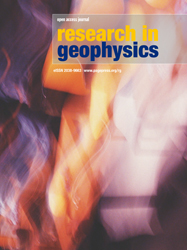Original Articles
Vol. 2 No. 1 (2012): 7th International Workshop in Statistical Seismology, 2011
Long-term earthquake forecasts based on the epidemic-type aftershock sequence (ETAS) model for short-term clustering

Publisher's note
All claims expressed in this article are solely those of the authors and do not necessarily represent those of their affiliated organizations, or those of the publisher, the editors and the reviewers. Any product that may be evaluated in this article or claim that may be made by its manufacturer is not guaranteed or endorsed by the publisher.
All claims expressed in this article are solely those of the authors and do not necessarily represent those of their affiliated organizations, or those of the publisher, the editors and the reviewers. Any product that may be evaluated in this article or claim that may be made by its manufacturer is not guaranteed or endorsed by the publisher.
Published: 31 July 2012
4652
Views
1656
Downloads






